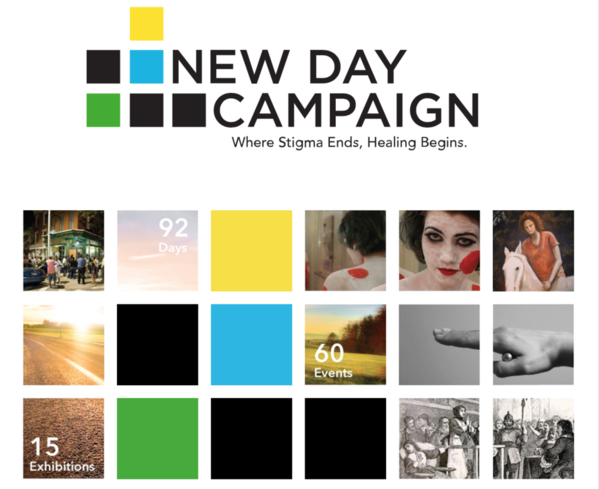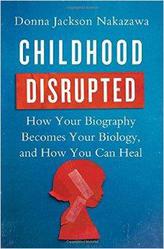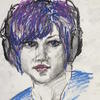 On a beautiful fall day I drove up to Baltimore from my home in Washington, DC for an event I learned about in a post by Donna Jackson Nakazawa on the ACEs Connection group named after the title of her new, must-read book, Childhood Disrupted. It read “Hope you can join me this Friday…I’ll be speaking about Intergenerational Trauma: What It Is, Why It Is, and What Is Being Done to End It.” The invitation felt directed at me personally, just the feeling I had while reading her book. How could she capture the experiences of my childhood so perfectly, help me make sense of it, and give me concrete strategies for healing? No way, I would miss the chance to meet her.
On a beautiful fall day I drove up to Baltimore from my home in Washington, DC for an event I learned about in a post by Donna Jackson Nakazawa on the ACEs Connection group named after the title of her new, must-read book, Childhood Disrupted. It read “Hope you can join me this Friday…I’ll be speaking about Intergenerational Trauma: What It Is, Why It Is, and What Is Being Done to End It.” The invitation felt directed at me personally, just the feeling I had while reading her book. How could she capture the experiences of my childhood so perfectly, help me make sense of it, and give me concrete strategies for healing? No way, I would miss the chance to meet her.
 When we met just before the program started, Nakazawa mentioned an interview she did the day before on WYPR, the public radio station in Baltimore and how she hoped to connect the listeners to broader community of people working to address trauma. The intro to the interview links the listener to ACEs Too High. With a radiant smile, she hugged me and said, “that is for Jane Stevens (ACEs Connection Network founder) whom I’ve never met in person but is a sister to me.” The bonds among individuals in the trauma movement are striking.
When we met just before the program started, Nakazawa mentioned an interview she did the day before on WYPR, the public radio station in Baltimore and how she hoped to connect the listeners to broader community of people working to address trauma. The intro to the interview links the listener to ACEs Too High. With a radiant smile, she hugged me and said, “that is for Jane Stevens (ACEs Connection Network founder) whom I’ve never met in person but is a sister to me.” The bonds among individuals in the trauma movement are striking.
The New Day Campaign, self-described as a “2015 initiative using art to challenge stigma and discrimination associated with mental illness and addiction,” sponsored the amazing and inspiring event. The Campaign started on October 1 and includes 15 exhibitions and 60 events designed over 92 days to “open hearts, change thinking and conversations, and offer pathways to action for those affected by mental illness and addiction.
The Campaign’s founder and director, Peter Bruun, an artist and activist, lost his daughter, Elisif Janis Bruun, also an artist, to an overdose less than two years ago. Her work was exhibited at the event. In his welcome, Bruun said his daughter, like the uncle he never met who died in an insane asylum in Denmark, felt “discomfort in this world.” He said his family’s story is just one example of what passes from one generation to another.
 With the campaign, Bruun said he wanted “to throw a bunch of things against the wall this year, see what sticks, and then step back and reflect on what should happen next.” For me, the Campaign was yet another example of a parent’s grief fueling action to prevent such tragic loss for other families and make the world a more healing place.
With the campaign, Bruun said he wanted “to throw a bunch of things against the wall this year, see what sticks, and then step back and reflect on what should happen next.” For me, the Campaign was yet another example of a parent’s grief fueling action to prevent such tragic loss for other families and make the world a more healing place.
There was a table of fresh whole food prepared by nutritionist and chef Christine Horensky and dramatic drumming and storytelling by David Fakunle. Kimberly Burton of the Mental Health Association of Maryland spoke at the meeting about her difficult childhood and the ripples that continue into her adult life. During the intermission, Burton and I were chatting in the theater when Debbie Rock, CEO of LIGHT Health & Wellness who was speaking next, did a sound check. Burton thought it was karaoke but in fact it was Rock’s own gorgeous voice. It turns out that she was a disco recording artist under the name Debbie Jacobs at one stage of her life in addition to being a teacher and social worker. LIGHT Health & Wellness provides services to children and adults in Baltimore to address their specific challenges to health and well being.
Christina Bethell, PhD, with the Johns Hopkins Bloomberg School of Public Health, shared some of her own life story through her poetry and personal narrative in addition to presenting data on childhood adversity specific to Baltimore from the Child and Adolescent Health Measurement Initiative (CAHMI). She said the number of children in Baltimore with ACEs scores of two or more (141,700 children) could fill 800 school buses—a data point that should be shared with policymakers to help them grasp the magnitude of the need for policies and programs to help children prepare to learn.
Roslyn Moss, a fifth generation teen mom with five years of sobriety, described being on a long journey to wholeness. She now encourages others through public appearances (at times teaming up with Debbie Rock) to become advocates for themselves and their communities.
Cyril Scovens, Community Outreach Coordinator for Tuerk House, a provider of addiction services in the West Baltimore community of Sandtown-Winchester, spoke of the thrill he experienced participating in the Unite to Face Addiction Rally held on the Mall in Washington, DC earlier this fall when addiction “came out of the darkness.”
The consistent theme of the afternoon in Baltimore could be summarized by the phrase spoken there: “Be the light.”

Comments (1)